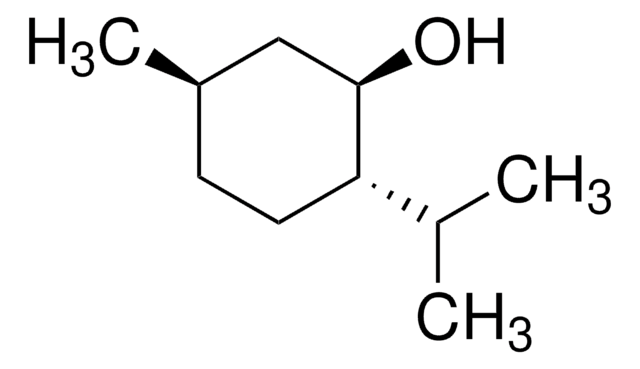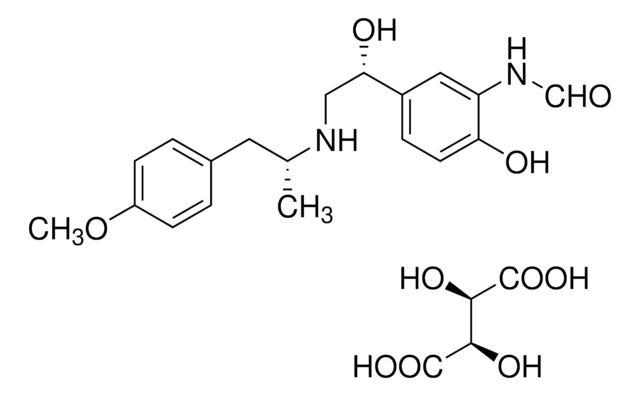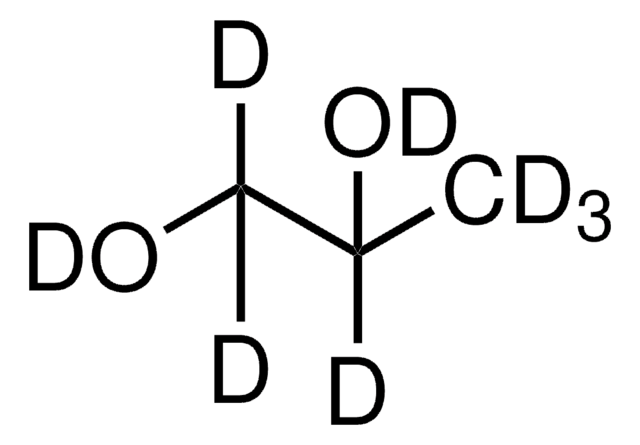PHR1045
Diethylene glycol
Pharmaceutical Secondary Standard; Certified Reference Material
Synonyme(s) :
2,2′-oxydiéthanol, 2-hydroxyéthyl éther
About This Item
Produits recommandés
Qualité
certified reference material
pharmaceutical secondary standard
Niveau de qualité
Agence
traceable to Ph. Eur. Y0000217
traceable to USP 1193265
Densité de vapeur
2.14 (vs air)
Pression de vapeur
0.01 mmHg ( 20 °C)
Famille d'API
diethylene glycol
CofA (certificat d'analyse)
current certificate can be downloaded
Température d'inflammation spontanée
442 °F
Limite d'explosivité
2-12.3 %
Technique(s)
HPLC: suitable
gas chromatography (GC): suitable
Indice de réfraction
n20/D 1.447 (lit.)
Point d'ébullition
245 °C (lit.)
Pf
−10 °C (lit.)
Densité
1.118 g/mL at 25 °C (lit.)
Application(s)
cleaning products
cosmetics
food and beverages
personal care
pharmaceutical (small molecule)
Format
neat
Température de stockage
2-30°C
Chaîne SMILES
OCCOCCO
InChI
1S/C4H10O3/c5-1-3-7-4-2-6/h5-6H,1-4H2
Clé InChI
MTHSVFCYNBDYFN-UHFFFAOYSA-N
Vous recherchez des produits similaires ? Visite Guide de comparaison des produits
Description générale
Diethylene glycol is a a four carbon dimer of ethylene glycol and finds applications as antifreeze, solvent, humectant, hydraulic fluid and brake fluid. It is a potential neuro- and nephrotoxin for humans. It may also be utilized in moisturizers, lubricants, emulsification agents, additives and solvents.
Application
Remarque sur l'analyse
Autres remarques
Note de bas de page
Produits recommandés
Application
Produit(s) apparenté(s)
Mention d'avertissement
Warning
Mentions de danger
Conseils de prudence
Classification des risques
Acute Tox. 4 Oral
Code de la classe de stockage
10 - Combustible liquids
Classe de danger pour l'eau (WGK)
WGK 1
Point d'éclair (°F)
280.4 °F - closed cup
Point d'éclair (°C)
138 °C - closed cup
Faites votre choix parmi les versions les plus récentes :
Déjà en possession de ce produit ?
Retrouvez la documentation relative aux produits que vous avez récemment achetés dans la Bibliothèque de documents.
Les clients ont également consulté
Protocoles
99%; Glycerol, ≥99.5%; Tetraethylene glycol, 99%
Chromatograms
suitable for GCNotre équipe de scientifiques dispose d'une expérience dans tous les secteurs de la recherche, notamment en sciences de la vie, science des matériaux, synthèse chimique, chromatographie, analyse et dans de nombreux autres domaines..
Contacter notre Service technique










